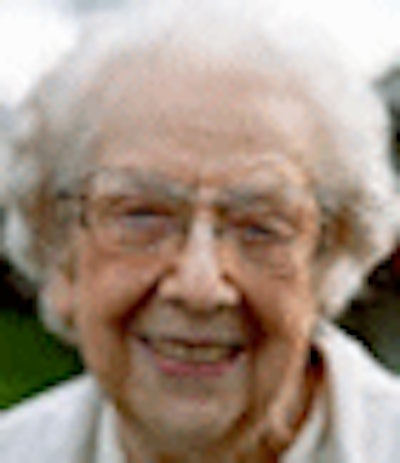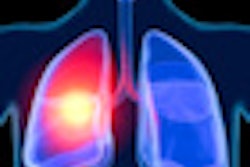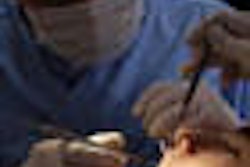
Elderly patients presenting for surgery may be harboring undetected oral infections that could lead to expensive and life-threatening complications, according to a study in the Journal of the American Geriatrics Society (June 1, 2010).
The entire medical team -- including oral care providers -- needs to be aware of these risks and conduct preoperative oral assessment in this vulnerable population, according to Jeffrey Yasny, D.D.S., lead author and an assistant professor of both dentistry and anesthesiology at Mount Sinai Medical Center.
"Dental infections are often overlooked in preoperative screening," he told Dr.Bicuspid.com. "They need to be included with any other sources of infection."
“If we can catch these problems before they enter the OR, we're ahead of the game.”
— Jeffrey Yasny, D.D.S., Mount Sinai
Medical Center
The geriatric mouth has elements that are particularly concerning perioperatively:
- Decreased immunity leaves the geriatric mouth more prone to candidiasis and other fungal infections of the mouth.
- Decreased salivation leads to a decrease in saliva's buffering effects and an increase in caries, particularly root caries.
- As people age and the gingiva recedes, they are more prone to root caries; 50% of people 75 years and older have been found to have root caries, which can lead to periodontal or endodontal infection and increased risk of tooth fracture.
Sometimes patients have not had an oral examination in years or even decades. According to Dr. Yasny, 31% of the elderly study patients had not seen a dentist in five years. Because of this, it is not always a dentist who will first become aware of an acute or chronic oral problem with a preoperative patient. It may instead be an anesthesiologist, nurse, or other healthcare provider.
Infections of any kind are a major concern perioperatively, so eliminating the sources of infection prior to surgery is critical. Left untreated, the pathogens colonizing a diseased oral cavity can cause serious complications if they enter the bloodstream or are inhaled into the lungs during surgery.
One rare but serious complication of the bacteria entering the bloodstream (bacteremia) is infective endocarditis, which is especially prone to affect those with heart valve defects and other structural cardiac defects. Bacteria that have found their way into the bloodstream can lodge in the abnormal valves, causing inflammation of the endocardium, the tissue layer that lines the chambers of the heart.
Bloodstream infections most commonly stem from gingival disease, according to John Brusch, M.D., an assistant professor of medicine at Harvard Medical School. According to Dr. Brusch, 10% of those with high-grade gingivitis have recurrent transient bacteremias, and in 85% of those with infective endocarditis, the symptoms appear within two weeks of dental procedures. Left untreated, infective endocarditis is almost always fatal and has a mortality rate as high as 50% with treatment, depending upon the organism.
Dr. Yasny recommends that any acute infections such as abscesses should be the primary focus of a preoperative oral assessment. Once treated, the patient should be given at least a week of healing time, if possible, even if it delays the surgery.
Postoperative pneumonia
Postoperative pneumonia is another concern, particularly among geriatric patients. The major risk factors for postoperative pneumonia are age older than 70, abdominal or thoracic surgery, and dependent functional status.
The most common cause of these pneumonias is aspiration of bacteria colonizing the oropharynx and upper airways, particularly in the presence of endotracheal intubation with mechanical ventilation, in which pneumonia occurs in 17% to 23% of patients. Intubation breaches the airway's natural defenses, including impairing the ability to cough and clear mucus, and the endotracheal tube and cuff can become locations where bacteria congregate in the airway.
Approximately 50% of all people aspirate oropharyngeal secretions during sleep, but intact lung defenses and insufficient volumes of aspirate probably prevent infection in individuals who are not immunocompromised. Studies have shown, however, that potential respiratory pathogens are often colonizers of subgingival dental plaque in periodontitis patients (Journal of Public Health Dentistry, December 2000, Vol. 60:4, pp. 313-20).
Another study found that patients were 3.5 times as likely to develop postoperative pneumonia in the presence of significant periodontal disease (BMC Infectious Diseases, June 29, 2009, Vol. 9:104). Researchers at the Graduate School of Medicine at Chiba University have also shown that the incidence of aspiration pneumonia was lessened by a preoperative intervention of having the patients brush their teeth five times a day (Surgery, April 2010, Vol. 147:4, pp. 497-502).
A related issue is perioperative dental damage related to intubation. It is the most common medicolegal complaint against anesthesiologists, comprising one-third of claims. Some 50% to 75% of these injuries occur during intubation, when the patients' anterior maxillary teeth are sometimes used as a fulcrum while using the laryngoscope blade. The most common dental injuries are enamel fracturing, loosening/subluxation of a tooth, tooth avulsion, and crown fracture (Anesthesia and Analgesia, May 2009, Vol. 108:5, pp. 1564-1573).
Other risks
Aspiration of the teeth is another risk associated with periodontal disease. As periodontitis progresses, so does mobility of teeth, placing patients at risk of fracturing, aspirating, or swallowing a tooth, particularly during intubation. If a loose tooth has been previously identified, it can be secured preoperatively, Dr. Yasny noted.
Prosthetic hips and knees have also been implicated as potential infection sites secondary to dental infections, he said. Daniel Becker, D.D.S., the associate director of education for the general practice dental residency at Miami Valley Hospital is Dayton, OH, is less convinced.
"A lot of people say that if there's infection in the mouth, obviously there's bacteremia, and why wouldn't that contribute to infections or complications in the other parts of the body it's spread to," he said. "The only thing is, that's not really scientific. There's no proof of any of that. It's empiric."
Because of these risks, Dr. Yasny recommends a thorough, hands-on assessment of patients preoperatively, if time permits (Seminars in Cardiothoracic and Vascular Anesthesia, March 2010, Vol. 14:1, pp. 38-40). The anesthesiologist (or preferably a dentist) should inspect the oral cavity for loose teeth, caries, and overt signs of infection.
"Screening is really the best line of defense," he said. "If we can catch these problems before they enter the OR, we're ahead of the game."
Copyright © 2010 DrBicuspid.com



















